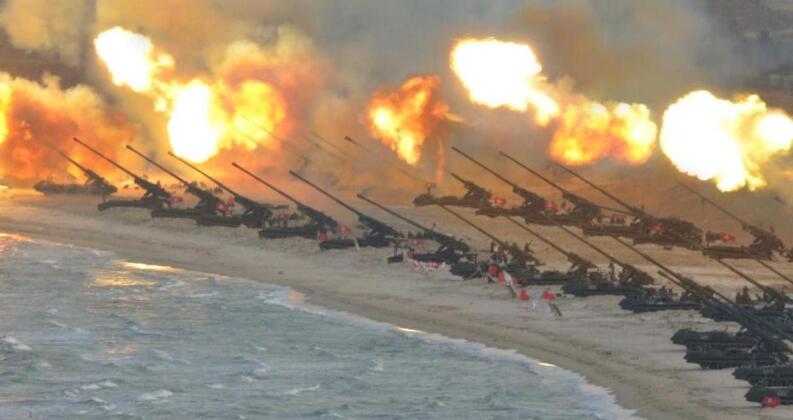News
U.S. Drawing Down Weapons Stocks in Korea to Arm Ukraine: Can Urgent Necessity Justify its Poor Timing?
The United States Military’s Korean Peninsula command, United States Forces Korean (USFK), has been requested to provide military equipment from its stockpiles to arm Ukraine. South Korea hosts the third largest contingent of overseas American personnel in the world at over 27,000, which are deployed with some of the country’s largest arms stockpiles particularly of ground forces equipment. Unlike the larger U.S. presences on German and Japan, forces in Korea directly border the territory of one of the Pentagon’s designated four ‘great power adversaries,’ namely North Korea, which has been in a state of war with the United States since 1950. Forces in Korea have long been seen as particularly vulnerable due to their distance from the United States mainland and the lengths of supply lines needed to equip them, which has been exacerbated by rapid advances in North Korean strike capabilities including with new precision guided ballistic missiles and rocket artillery systems – which can both be used as delivery vehicles for weapons of mass destruction. The decision to withdraw supplies has been seen by some analysts as poorly timed, with North Korea having demonstrated unprecedented new military capabilities in recent tests and in December flying drones over the South Korean presidential palace in a major show of force.

The kinds of equipment which will be diverted from stockpiles in Korea to Ukraine were not specified, but are widely speculated to primarily be artillery assets. USFK claimed following the reporting of requests for supplies that the depletion of its inventories would have “zero impact on our operations and our ability to execute on our ironclad commitment to the defence of our ally, the Republic of Korea.” The New York Times reported that 155mm artillery shells from stocks in South Korea had already been transitioned to Ukraine, as had munitions of the same calibre from American bases in Israel. These calibers are compatible with many NATO gun types recently donated to the Ukrainian Army such as the American M777 and M109 and the German PzH 2000. Over one million 155mm shells have already been supplied to the Ukrainian Military, with “a sizeable portion” of these coming from facilities in Korea and Israel according to the unnamed U.S. officials cited.

Artillery assets have played an increasingly central role in the ongoing Russian-Ukrainian War, with NATO and Russian supplies both running low leading the latter to reportedly look to North Korea to supply auxiliary contractor forces aiding the Russian Army in the campaign. The East Asian state is thought to have some of the world’s largest stocks of artillery ammunition possibly exceeding those of NATO or Russia. An anonymous official cited by Fox News claimed that the United States was “looking under every rock” for ammunition, with the stockpiles of many NATO members being depleted beyond prior safety limits. With the Korean theatre expected to see artillery play an even more central role than that it currently does in Korean, however, largely due to the nature of the terrain, the more immediate perceived need to allow Ukraine to sustain its bombardments may well risk undermining the American position in a strategically more critical East Asian theatre. North Korea itself fields the largest artillery forces in the world, including deployment of the highest calibre guns outside Russia and the longest ranged rocket artillery assets outside China. Their rapid modernisation over the past decade has been a leading cause for concern for U.S. forces in the region.












